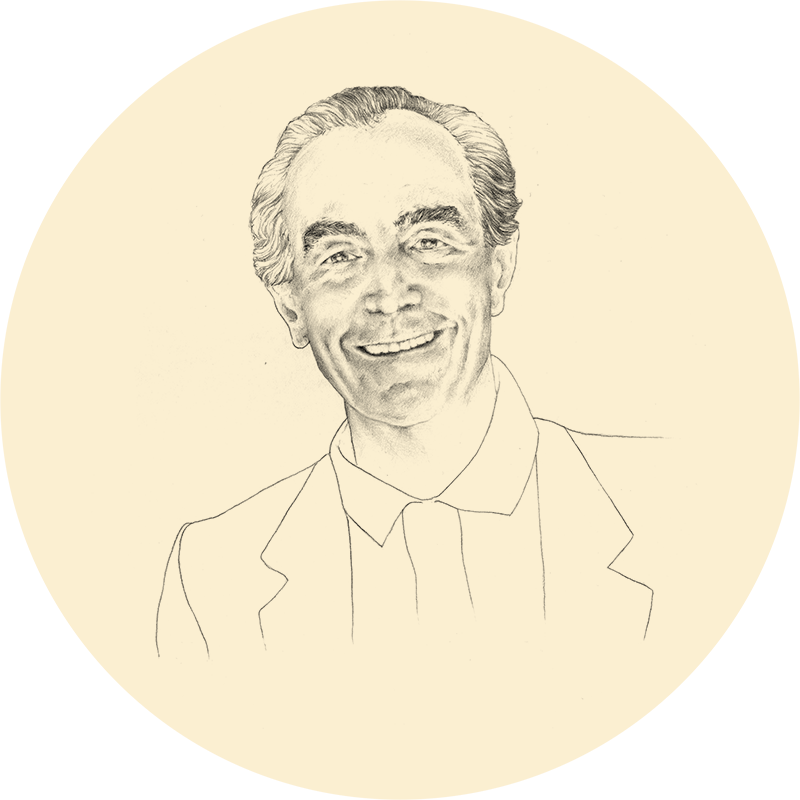You had a sort of understated British elegance, Vico. Your only concession to eccentricity was the thing of the bright red socks. An ironic, festive detail. Red, like many of your urban projects scattered all over Milan. Red, which was supposed to be the color of the Tower of Parco Sempione. A tower, not a skyscraper, like the Torre Velasca, in keeping with the local naming tradition. Red, like the building on Via San Marco. But not just any red. When construction was already under way you noticed the color of a jacket of a passer-by. That was the red you were looking for. A comic scene, convincing the person to sell you the jacket so you could bring it to the worksite.
When you moved your home to Via del Gesù in the 1970s you had a great excuse for your morning walks, from the house to the studio. Along the way you would stop in at the De Padova showroom on Corso Venezia, for a cup of coffee and a conversation with the craftsmen or with Maddalena, the champion of industrial taste, talent scout, farsighted businesswoman.
You had studied at the Parini high school, like a good scion of the Milan middle class, and you were proud of your classical culture, your humanist sensibilities. The first computer didn’t enter your studio until 2003, though you had no disdain for technology… you just didn’t feel the need for it. You were interested in ideas. You did “concept design,” and you would never in your life have wanted to “design the countess’s parlor.” You were not a decorator. Your house in London, when at the height of your international renown you began to spend time at the Royal College of Art, was full of objects you had invented. Often uncomfortable ones. A laboratory of thought, not an egotistical museum.
Your buildings are all over Milan, from the towers of the Gallaratese to the Famagosta depot, from the QT8 church to the Department of Biology at Città Studi. And where you were unable to take your architecture, you brought your conceptual objects: chairs, sofas, tables, bookcases. This was your way of making Milanese character known to the world. With very little theory and lots of sensibility. To be practical and emotional at the same time. Every one of your objects is a narrative. You were often inspired by the novels you eagerly consumed. It was Victor Hugo, in Les Misérables, for example, that triggered the idea for the Eclisse. You were in the subway, thinking about the description of the lantern of Jean Valjean in flight. You closed the book and made a note, a sketch, on the back of your subway ticket. The idea became your most famous lamp. Which you even began to detest, over the years. “They won’t refrain from putting on my tomb,” you caustically remarked.
Don’t worry, Vico, that did not happen. You’ve been placed in the family tomb, together with your lineage of Milanese architects. At the Cimitero Monumentale, obviously, as was only right, as the bourgeois tradition recommends for the illustrious sons and daughters of this city.
